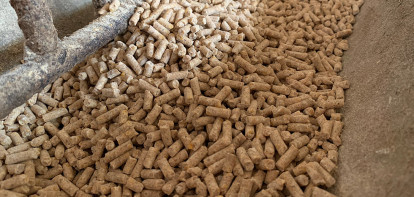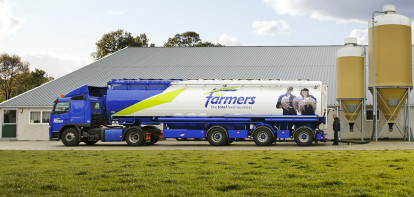Analysis Insights
Poultry brings ForFarmers success in Poland
The Western European feed market has been a shrinking market for several years. This was the reason for ForFarmers to establish a presence in Poland in 2018, a country where the livestock population is still growing. The Lochem-based publicly traded animal feed giant proudly announced this week via its social media channels that the feed production of Tasomix has exceeded 1 million tons in 2024. How did this volume come about in recent years? An analysis of the development in Poland and the impact on the financial performance in the Germany/Poland cluster.
In February 2018, ForFarmers announced a joint venture with Tasomix. With this collaboration, ForFarmers also acquired 60% of the shares in the Polish feed company. At the announcement, it was stated that Tasomix sold 395,000 tons, mainly poultry feed, in 2016. Former CEO Yoram Knoop expressed 'happiness with the first step we are taking in Poland' and referred to the country as 'the place to be'.
In July 2023, the activities in Poland were expanded with the acquisition of Piast. This company also focuses mainly on the production of poultry feeds. At the time of acquisition, Piast produced approximately 410,000 tons of feeds annually. The positioning of Piast's factories reportedly expanded the operational area in the growth cores of Poland.
Autonomous growth in Poland compensates for decline elsewhere
With the above developments, the total feed volume added to ForFarmers' operations amounted to about 805,000 tons. This week, the company shared via its social media channels that the total volume of Tasomix has surpassed 1 million tons for the first time. The delivery to the customer was recorded on video. The autonomous growth compared to the acquired volumes is estimated to be around 195,000 tons, which translates to almost 20% autonomous volume growth. This growth in Eastern Europe somewhat compensates for the decline that has occurred in the other countries where it operates. In countries like the Netherlands, Germany, Belgium, and the United Kingdom, sales volumes have been under pressure for years, although the company seems to have managed to keep the volume decline in these areas under control in 2024.
| Volume development in Poland | In tons |
| Tasomix | 395,000 |
| Piast | 410,000 |
| Total acquired | 805,000 |
| Realized in 2024 | >1,000,000 |
With the total volume now reaching 1,000,000 tons, the Polish market is becoming increasingly important for the company. Measured against the total annual production of 8.4 million tons in 2023, Poland's share of the total volume now exceeds 10%. Poland has thus become an important pillar with additional growth potential in the coming years.
Impact on results
ForFarmers' strategy has been focused for years on being among the major players in the countries where it operates. This provides economies of scale that are expected to ultimately contribute positively to profitability in these regions. In countries where it does not hold a leading position in sales volumes, the margins are reportedly thin, according to the reasoning. In Poland, ForFarmers now holds a number 3 position in the free compound feed market, after De Heus and Cargill, as stated in ForFarmers' 2022 annual report. This leading position also appears to contribute positively to the profitability of the company in the Germany and Poland cluster.
In the 2017 annual report (the year before the first step in Poland), an underlying EBITDA of €15.5 million was achieved in the Germany cluster, which now also includes Poland. This figure included the activities in Belgium, which were sold in 2023. The sales volume at that time was around 2.11 million tons. In 2023, the underlying EBITDA in the Germany/Poland cluster amounted to a substantial €29.5 million with a total sales volume of 1.94 million tons. This indicates a clear increase in profitability per ton of feed.
Stock price on the rise
The results suggest that the (former) management of ForFarmers made a good choice to partially shift focus to growth markets. The effort to establish a foothold in the Polish growth market seems to be paying off in both volume growth and a positive development in underlying profitability. With this, the company aims to better seize growth opportunities and become less dependent on the declining livestock populations in Western Europe.
The decline in animal numbers in the home region is likely to continue in the coming year. Investors prefer not to see declines. Therefore, they are likely very pleased that the strategic choices, after years of declining stock prices, are bearing fruit. The move towards Poland has certainly contributed to this. ForFarmers' stock reached its highest level since April 2022 at the end of last week and is now around €3.50. This aligns well with the target price set by the Belgian bank Degroof Petercam in September.



